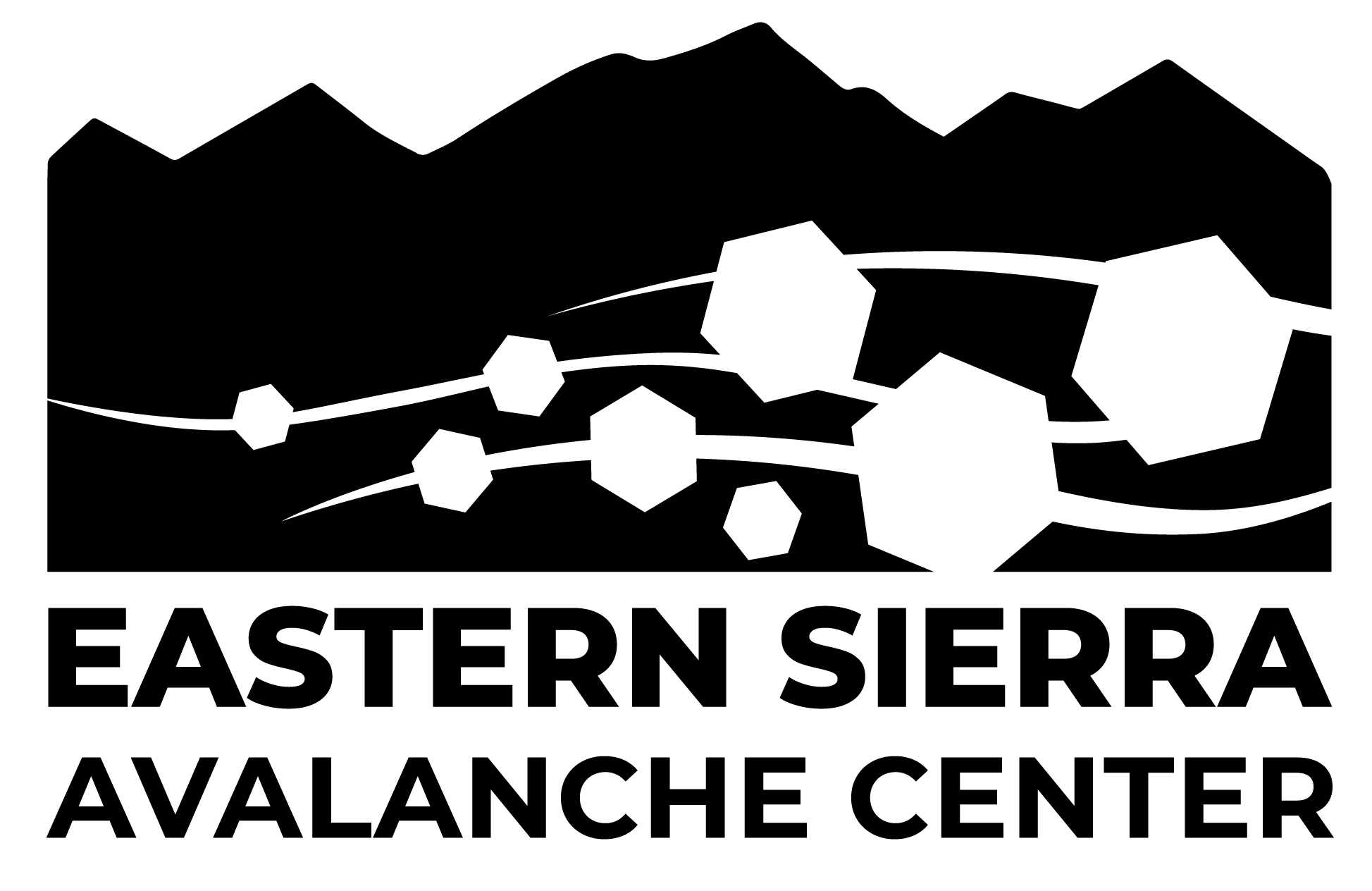Basic Information
Observation Details
Observation Date:
December 6, 2022Submitted:
December 7, 2022Observer:
Steve Mace | ESAC ForecasterZone or Region:
Mammoth LakesLocation:
Punta Bardini- signs of instability, bush wrestlingSigns of Unstable Snow
Recent Avalanches?
None ObservedCracking?
IsolatedCollapsing?
IsolatedKey Points
I went for a quick afternoon tour in the Punta Bardini area to track on the PS distribution. And to get an idea of how coverage differs on the east end of the ridge from the relatively deep snowpack near the crest.
We opted to skin up the road grade from the moto track to minimize our exposure to the start zones near the top of the tele bowls.
However, on our decent we decided to get a closer look to this steep terrain, and I triggered several large wumphs with one that shook the snow off a nearby tree and produce a shooting crack about 50-60 ft long. Spooky. A good reminder that we are all susceptible to powder fever, and that terrain choices are really the way to manage this issue.
Surface conditions as well as snow depth was largely dependent on elevation in this area. Averaging around 40-60 cm, Coverage feels particularly thin below 9000’ where rocks and bushes still abound. The snow also feels particularly upside down and could be described as trap door bellow 9,000’
Above 9000’ the snow was notably more pleasant to move through with more of a right side up quality and deeper coverage. ~60- 120cm
I dug in at around 9800’ and found a very similar structure that we have been finding throughout the mammoth area. Stability results highlighted the 12/1 facet crust combo as our layer of concern although results were a bit of a mixed bag. CTVSP, CT16SP, ECTN14 (see pit for more details)
We also noted reactive wind pockets near the top of the ridge in NTL catchment zones. We noted 1f hard deposits reacting with little force on 4F snow below. Nothing of concerning size but we avoided being in any sizable start zones.
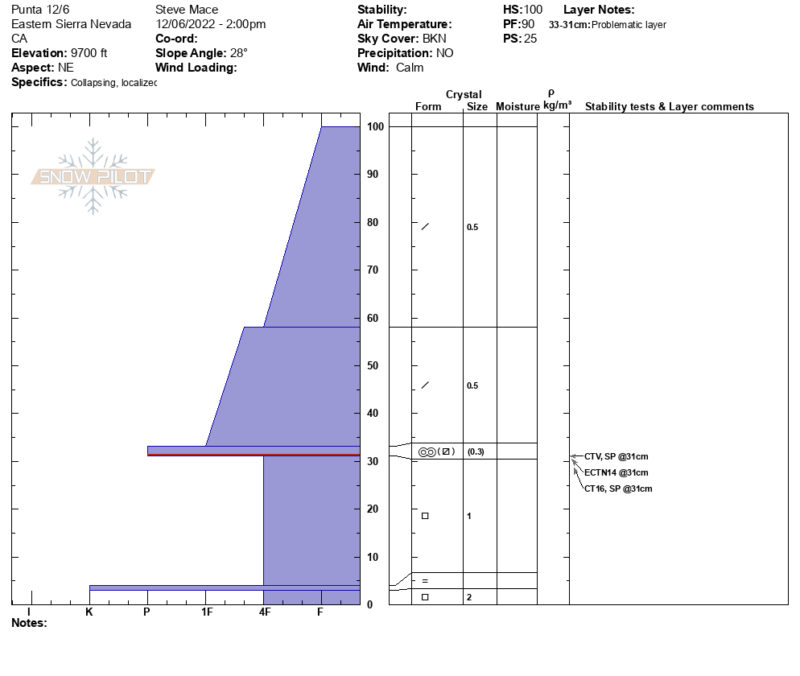
Media
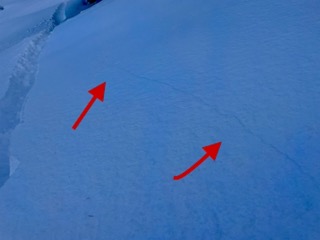
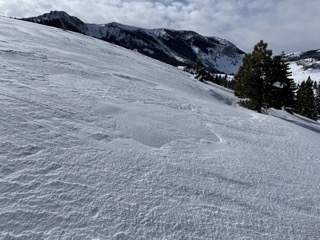
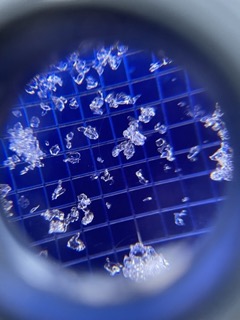
Advanced Information
Weather Summary
Cloud Cover:
OvercastTemperature:
25Wind:
Calm
Cloud cover increased throughout the afternoon and temperatures remained quite cold. Isiolated snow showers were visible along the whites, and it looked like some precip was also falling in the bloody drainage.
Close
